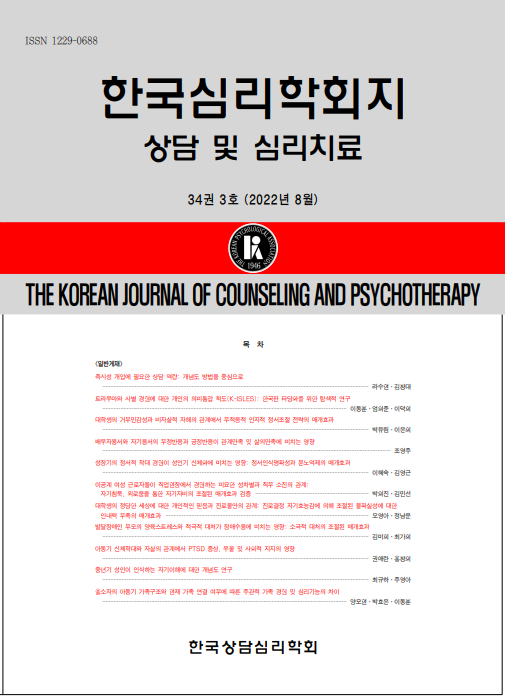open access
메뉴
open access
메뉴 ISSN : 1229-0688
ISSN : 1229-0688
본 연구의 목적은 공감할 때 사용되는 방법인 유추에 비해 의식적 정서공유를 촉진할 가능성이 있는 심상 시뮬레이션이 공감의 수준을 더 높일 수 있다는 것을 확인하는 것이다. 연구의 실험에 사용할 2개의 공감 시나리오를 제작하여, 공감을 할 때 심상 시뮬레이션과 유추가 사용되는 빈도를 확인하였고, 이들 중 어떤 방법을 사용하는 것이 공감의 수준을 높이는지 알아보았다. 또한 시나리오 주인공에 대해 참여자가 지각하는 유사성이 심상 시뮬레이션 및 유추의 사용과 공감의 수준에 어떤 영향을 미치는지 검증하였다. 이를 위해 145명의 참여자에게 시나리오에 대한 공감을 요청하여 그 반응을 녹음하였다. 녹음자료를 축어록으로 작성하여 3명의 훈련된 평정자들에게 공감 수준과 심상 시뮬레이션 및 유추를 평정하게 하였다. 연구 결과, 공감을 할 때 유추의 사용빈도가 심상 시뮬레이션의 사용빈도보다 훨씬 많이 나타났지만, 심상 시뮬레이션을 사용한 집단의 높은 공감수준이 더 높았다. 이러한 연구 결과들을 바탕으로 본 연구의 의의와 한계점 및 추후 연구에 대한 제언을 논의하였다.
The present study compared the effect of imagery simulation, which can facilitate conscious emotional sharing, and analogy on empathy level. Two scenarios were developed to investigate the influence of each empathy tool on empathy level, and the effect of frequency of use. The impact of level of similarity between participants’ experiences and scenarios was also examined. For the verification process, participants’ reactions were recorded while they read the scenarios. Recordings were evaluated by trained raters to compare changes in empathy level between groups. The results indicated that imagery simulation resulted in a higher level of empathy than analogy, even when analogy was used more frequently. They also indicated that participants with high levels of similarity with the imagery simulation showed the highest level of empathy, while those with low levels of similarity with the analogy showed the lowest level of empathy. The implications and limitations of the study are discussed.
